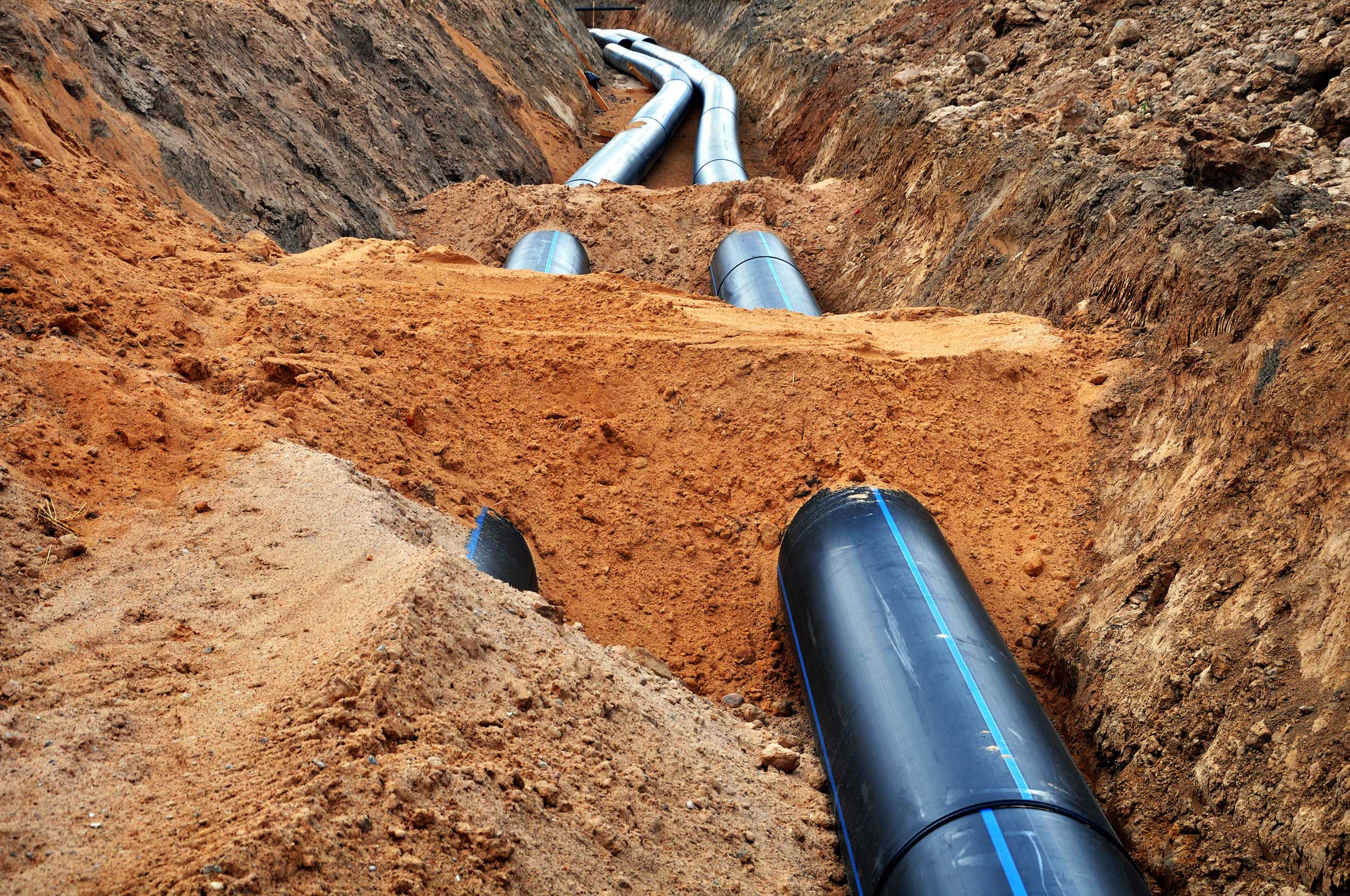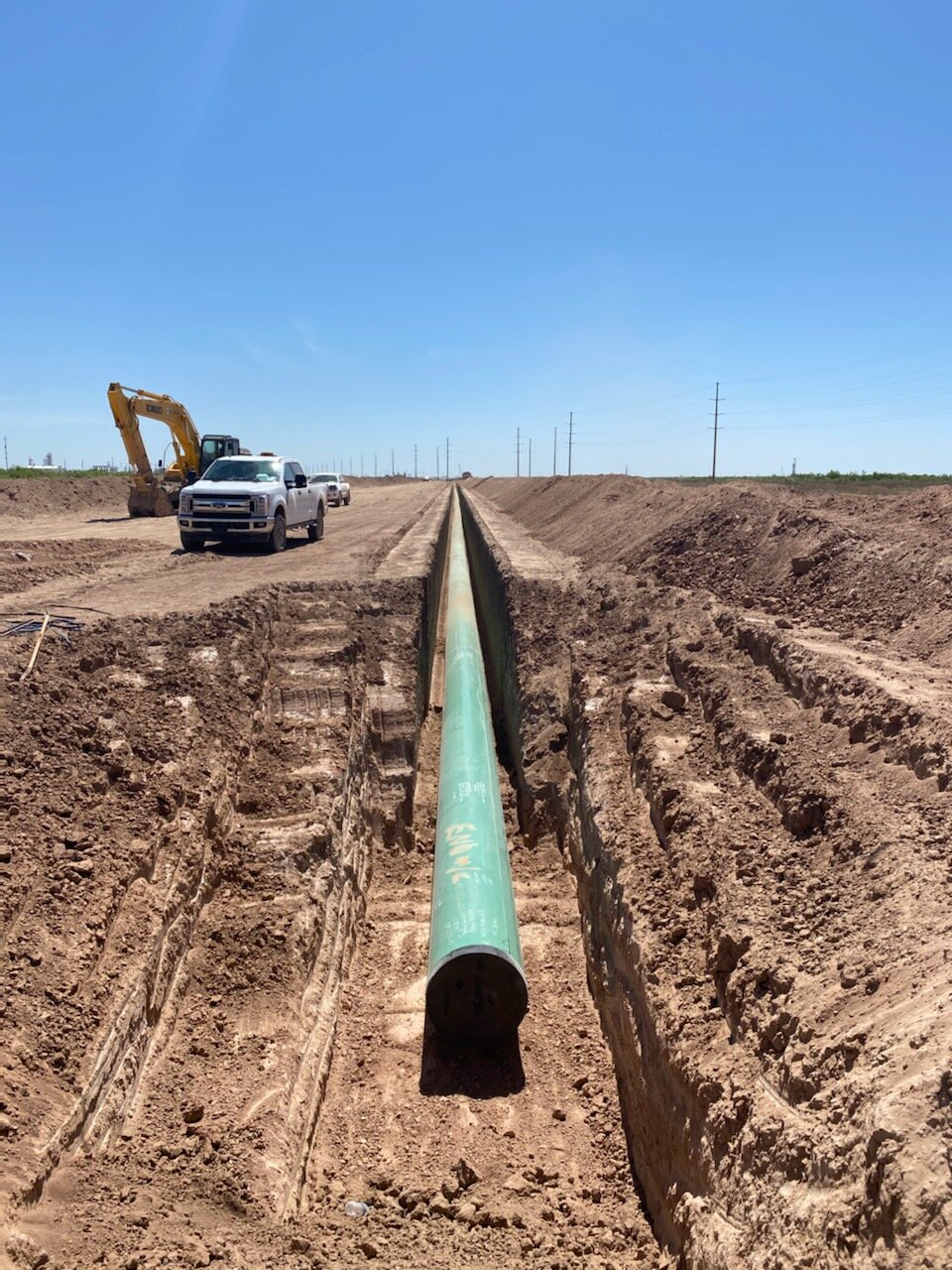Midland oilfield pipeline services: Using predictive strategies saves costs
Wiki Article
Comprehending the Key Attributes of Pipeline Services and Their Impact on Efficiency
Pipeline solutions play a crucial duty in various markets, influencing functional effectiveness significantly. Secret attributes, such as innovative tracking modern technologies and maintenance methods, are crucial for reducing downtime. Additionally, regulative compliance guarantees security and environmental security. Nonetheless, the interplay between style, framework, and financial variables can make complex these procedures. Understanding just how these aspects effect total efficiency raises crucial concerns concerning finest methods and future growths in the field.The Duty of Modern Technology in Pipeline Surveillance
As innovations in modern technology remain to progress, the value of reliable pipeline monitoring has actually become significantly noticeable. Modern pipe systems rely upon sophisticated monitoring tools that boost functional performance and safety. Technologies such as real-time data analytics, sensing units, and drones give drivers with prompt understandings into pipeline problems, enabling them to detect leaks, corrosion, and various other prospective problems prior to they intensify right into substantial issues.The assimilation of Web of Things (IoT) devices has changed typical surveillance approaches, allowing for continuous monitoring and automated coverage. This positive technique not only lessens threats however also maximizes maintenance timetables and resource allocation. Furthermore, progressed software application platforms assist in information visualization and interpretation, encouraging decision-makers to react quickly to anomalies. Jointly, these technological innovations not just boost pipe stability but also foster environmental stewardship by reducing the possible influence of leakages and spills.
Upkeep Approaches for Boosted Effectiveness
Effective maintenance strategies are necessary for optimizing pipe effectiveness. Applying anticipating upkeep strategies, adhering to regular evaluation methods, and creating robust emergency feedback plans can substantially boost functional dependability. These approaches not only minimize downtime however likewise add to the overall safety and honesty of pipeline systems.Anticipating Maintenance Techniques
Predictive maintenance techniques are significantly identified for their ability to boost functional efficiency in pipe services. By leveraging information analytics and monitoring technologies, these strategies make it possible for drivers to anticipate equipment failings prior to they occur. This positive approach decreases unexpected downtime, minimizes upkeep costs, and extends the life-span of important assets. Sensors and IoT gadgets play a pivotal function in accumulating real-time information, enabling the analysis of tools wellness and efficiency fads. Maker knowing algorithms evaluate this information to identify patterns and anticipate prospective issues. Pipeline drivers can schedule upkeep tasks during non-peak times, optimizing source allowance and ensuring continual procedure. Ultimately, the adoption of anticipating maintenance cultivates a much more reputable and reliable pipe framework.
Routine Examination Protocols
Routine evaluation protocols act as a foundation of upkeep strategies focused on boosting efficiency in pipeline operations - Creek Pipe Midland TX. These protocols involve systematic evaluations of pipe stability, concentrating on detecting possible concerns prior to they rise. Normal assessments typically consist of visual evaluations, leak discovery innovations, and pressure monitoring to assure peak performance. By adhering to well established schedules, operators can determine corrosion, product wear, or obstruction, thereby lessening downtime and fixing costs. In addition, information accumulated during inspections can educate anticipating upkeep initiatives, allowing for an aggressive method to pipe management. Eventually, routine inspections not only expand the lifespan of pipe infrastructure but likewise add to more secure and more dependable transport of sources, strengthening general operational efficiencyEmergency Situation Action Planning
Emergency response preparation is essential for maintaining efficiency in pipe procedures, guaranteeing that operators are prepared to attend to unexpected incidents swiftly and efficiently. A well-structured emergency feedback plan consists of clear methods, designated functions, and interaction strategies to alleviate dangers connected with pipe failings. Regular drills and training boost team preparedness and acquaint personnel with emergency situation procedures. In addition, having easily offered sources, such as spill control devices and emergency contact listings, can substantially minimize reaction times. By incorporating real-time tracking modern technologies, drivers can swiftly identify and react to concerns, decreasing environmental effect and functional downtime. Inevitably, a complete emergency response plan not only safeguards assets and personnel yet additionally reinforces the total efficiency of pipe solutions.Governing Conformity and Security Standards
Regulatory conformity and safety and security standards play a necessary function in the pipeline services industry. Creek Pipe local contractor. Abiding by sector laws assures that companies carry out reliable safety and security methods and take the chance of administration approaches. This dedication not just safeguards workers and the atmosphere but likewise improves overall operational effectivenessConformity With Industry Laws
Compliance with industry regulations is vital for ensuring the security and effectiveness of pipe operations. Regulative structures, such as those established by the Epa (EPA) and the Pipeline and Hazardous Products Security Administration (PHMSA), set rigorous criteria that drivers see should stick to. These guidelines cover different aspects, including pipe design, building and construction, maintenance, and surveillance, ensuring that systems run safely and properly. Non-compliance can result in serious penalties, operational delays, and ecological threats. By adhering to these policies, pipe companies not just secure public security and the atmosphere but also boost their functional effectiveness. Eventually, governing conformity cultivates count on amongst stakeholders, guaranteeing that pipe solutions can operate effortlessly in a competitive landscape while fulfilling lawful obligations.
Security Method Application
Effective safety and security protocol implementation is a necessary part of pipeline operations, carefully connected to regulative compliance and security criteria. Sticking to these procedures not just assures the protection of personnel but likewise safeguards the atmosphere and infrastructure. A robust safety and security structure includes normal training, comprehensive assessments, and using appropriate safety devices. Organizations needs to remain vigilant in upgrading their procedures to reflect modifications in regulations and technological developments. Conformity with established safety standards reduces the danger of accidents and boosts functional efficiency. In addition, a society of safety and security cultivates employee engagement and liability, adding to general business success. Ultimately, reliable safety and security procedure application is paramount in preserving the honesty of pipe services and attaining long-term sustainability in operations.Danger Management Approaches
Executing robust risk monitoring techniques is important for guaranteeing that pipe operations stick to regulative requirements and safety and security standards. Organizations has to identify prospective dangers and examine threats related to pipeline tasks. This includes conducting extensive inspections, using innovative tracking modern technologies, and keeping compliance with industry policies. Normal training for personnel on security protocols boosts situational awareness and prepares teams to respond effectively to emergencies. In addition, establishing contingency plans and performing drills can significantly alleviate risks. Working together with regulative bodies guarantees alignment with progressing safety and security standards. By focusing on danger management, pipe solutions can enhance functional effectiveness while guarding both the environment and public safety. Ultimately, a positive approach to risk monitoring fosters a society of security within the industry.Pipeline Style and Infrastructure Considerations
Just how can the style and facilities of pipes influence total functional performance? The configuration of pipes plays an important role in identifying their performance. Effective style minimizes friction losses, therefore lowering power consumption throughout fluid transport. Variables such as diameter, product choice, and format straight influence circulation prices and maintenance demands.Additionally, strategic placement of valves and keeping an eye on systems improves operational control and safety. Creek Pipe local contractor. Infrastructure considerations, consisting of availability for repair and maintenance, considerably impact downtime and total performance
In addition, integrating sophisticated technology for real-time tracking facilitates timely discovery of leaks or inefficiencies, making sure speedy reactions to issues. The total structural honesty, affected by product durability and environmental variables, likewise forms lasting functional success. Consequently, thoughtful style and robust framework are crucial for making best use of pipeline performance, inevitably adding to the dependability and profitability of pipeline services.
Ecological Influence and Sustainability Practices
While the need for pipeline services remains to expand, comprehending the environmental effect and adopting sustainability methods has actually become progressively necessary. The construction and operation of pipelines can notably influence ecological communities, wildlife environments, and water resources. To mitigate these effects, companies are implementing sophisticated modern technologies and practices focused on reducing exhausts, preventing spills, and minimizing land disruption.
Sustainability efforts typically consist of utilizing ecologically pleasant products, boosting power performance, and utilizing renewable resource sources to power operations. Additionally, firms are significantly performing detailed environmental analyses before project initiation, guaranteeing conformity with guidelines and stakeholder interaction.

Price Monitoring and Financial Consider Pipeline Providers
As the pipe industry grows, reliable expense administration and recognizing financial factors become essential for keeping competitiveness. Companies encounter various financial stress, including fluctuating product prices, labor expenses, check my blog and regulative conformity costs. To navigate these challenges, pipe service carriers need to take on tactical financial preparation and budgeting techniques.Buying innovation can enhance functional performance, eventually reducing costs with time. Furthermore, effective project administration guarantees that resources are alloted efficiently, decreasing hold-ups and unexpected expenses.

Market problems, such as demand for energy and geopolitical aspects, likewise influence economic feasibility. Companies have to stay nimble, adjusting their methods in response to these exterior elements.
Often Asked Concerns
What Are the Different Types of Pipeline Solutions Available?
Different kinds of pipe services include transportation, storage, upkeep, inspection, and fixing. Each solution plays an essential duty in ensuring the smooth movement of materials, enhancing safety and security, and minimizing functional disruptions across various fields.How Frequently Should Pipeline Inspections Be Carried Out?
Pipeline assessments should be conducted regularly, typically each to 3 years, relying on the kind and condition of the pipe. Extra constant examinations might be required for older or risky pipelines to guarantee safety and security and honesty.
What Are the Key Causes of Pipeline Failures?
The main reasons for pipe failings include deterioration, defective construction, material issues, outside damage, leakages, and operational errors. Each factor contributes significantly to potential threats, highlighting the relevance of routine maintenance and tracking for safety and security.How Can Firms Enhance Pipeline Solution Dependability?
Firms can boost pipeline solution dependability by executing regular upkeep routines, using sophisticated tracking innovations, conducting complete assessments, purchasing worker training, and taking on proactive danger management techniques to expect and minimize possible failings.What Function Do Operators Play in Pipeline Services?
Operators play an important role in pipeline services by making certain secure transport, maintaining tools, checking system honesty, coordinating upkeep, and responding to emergencies. Their proficiency directly affects functional performance and minimizes disruptions in solution distribution.Report this wiki page